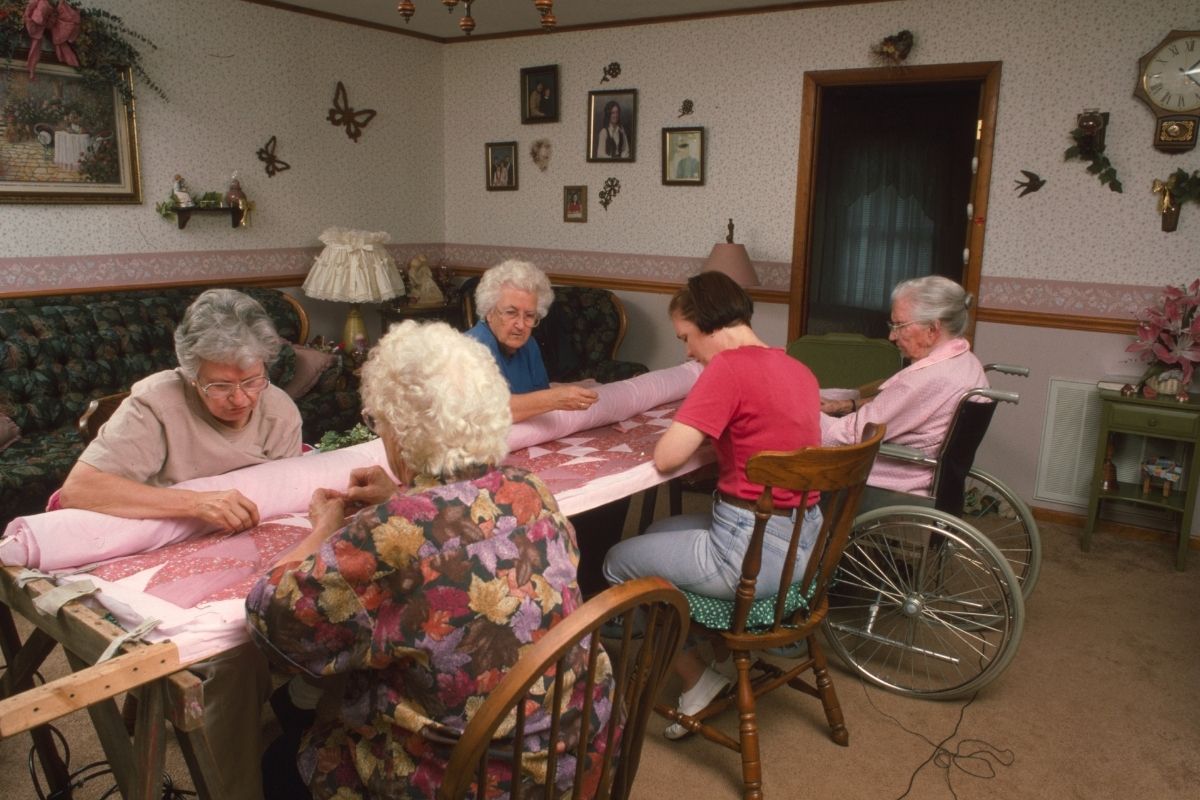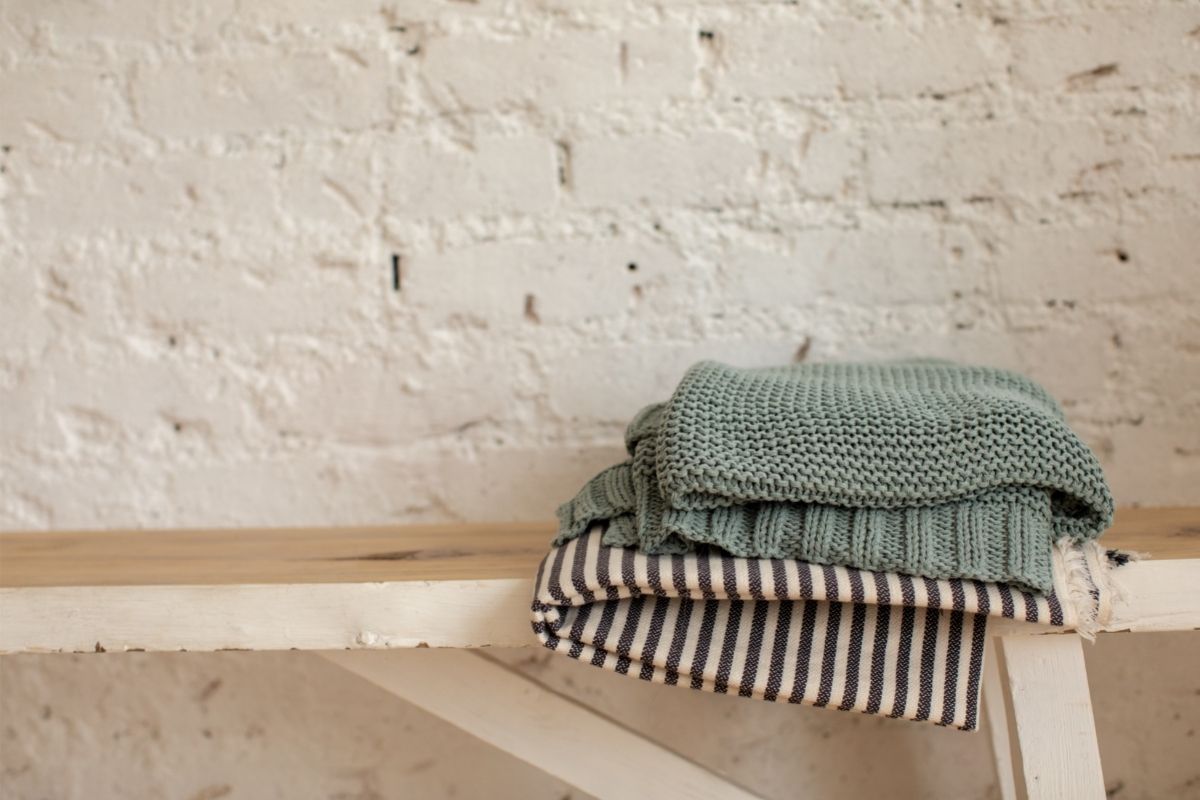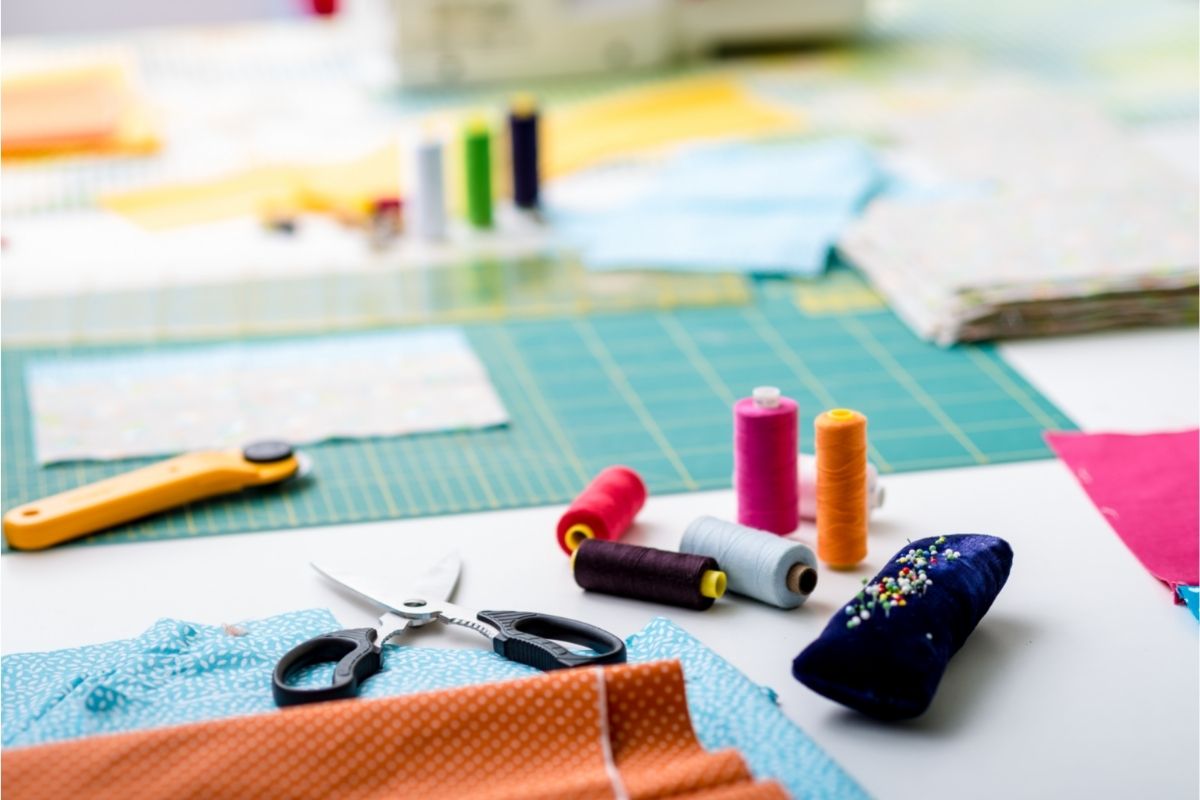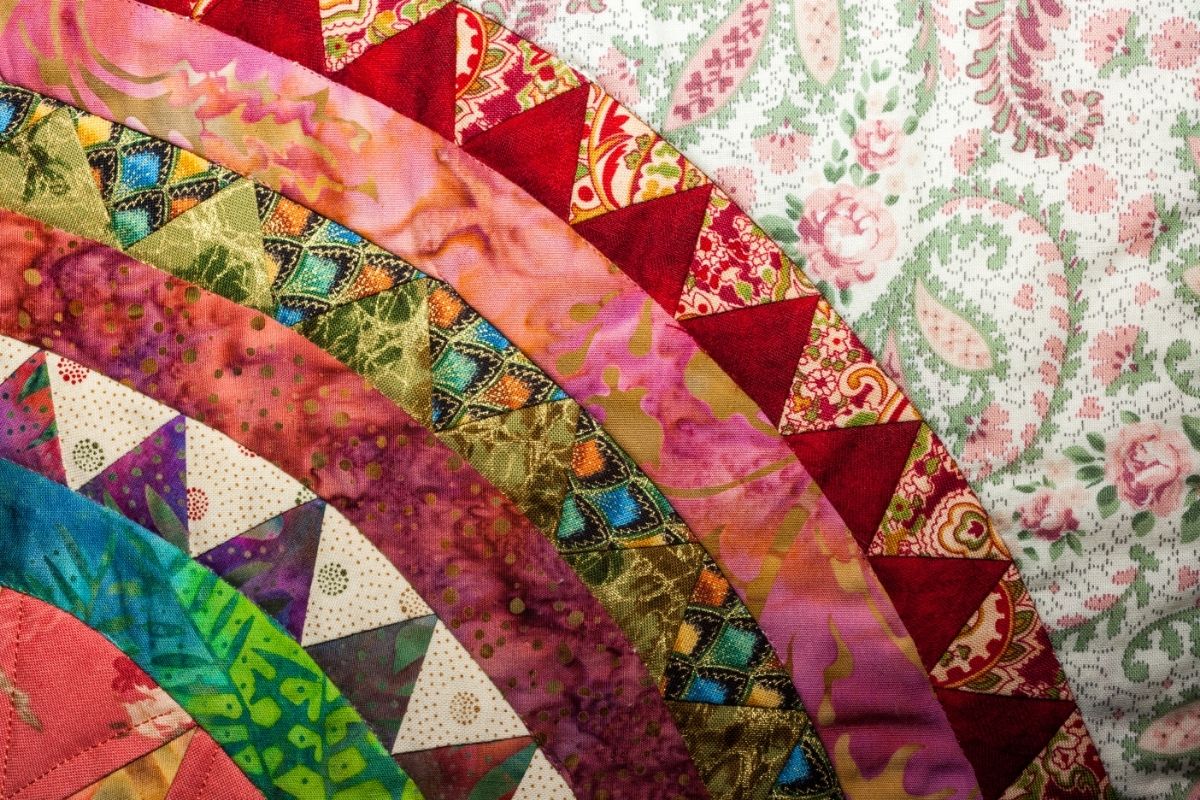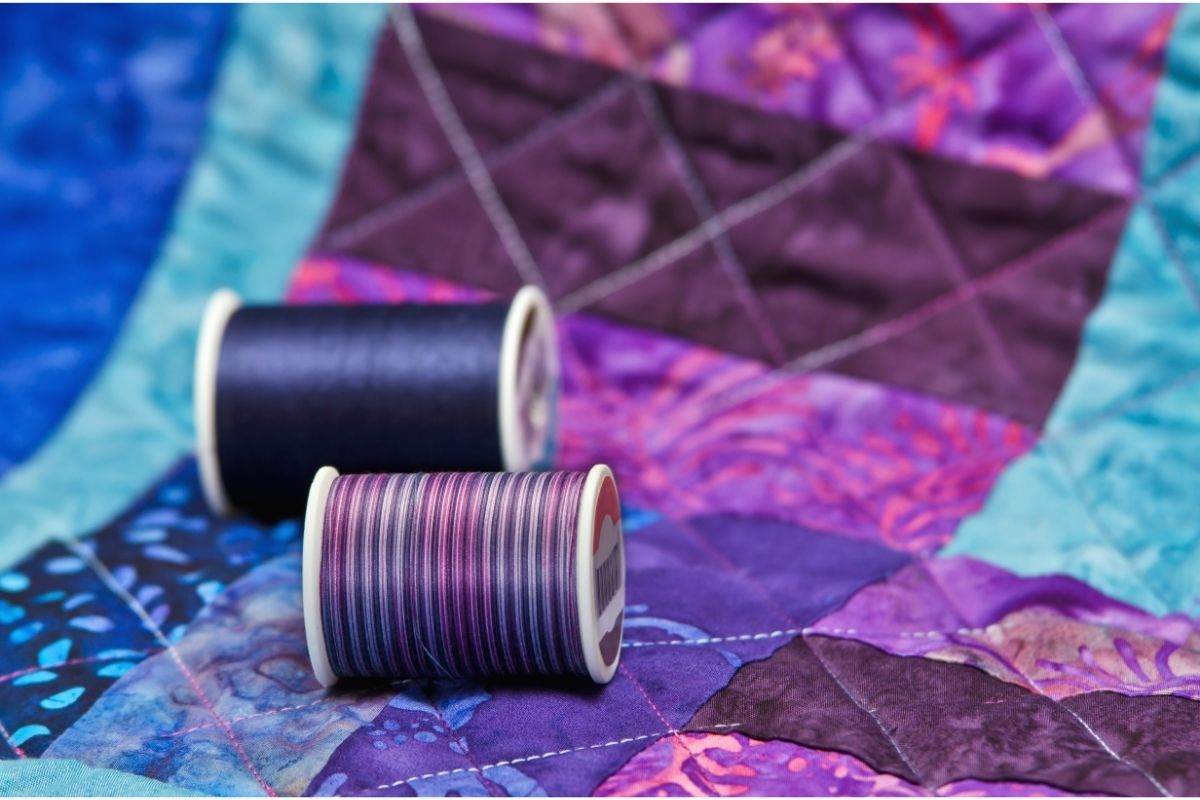Fidget blankets are soft, colorful, and fun. They come in various shapes and sizes and are designed to provide comfort and relaxation.
Fidget blankets are often used by children who suffer from anxiety, ADHD, autism, and other conditions, as well as for people who are recovering from strokes or living with dementia.
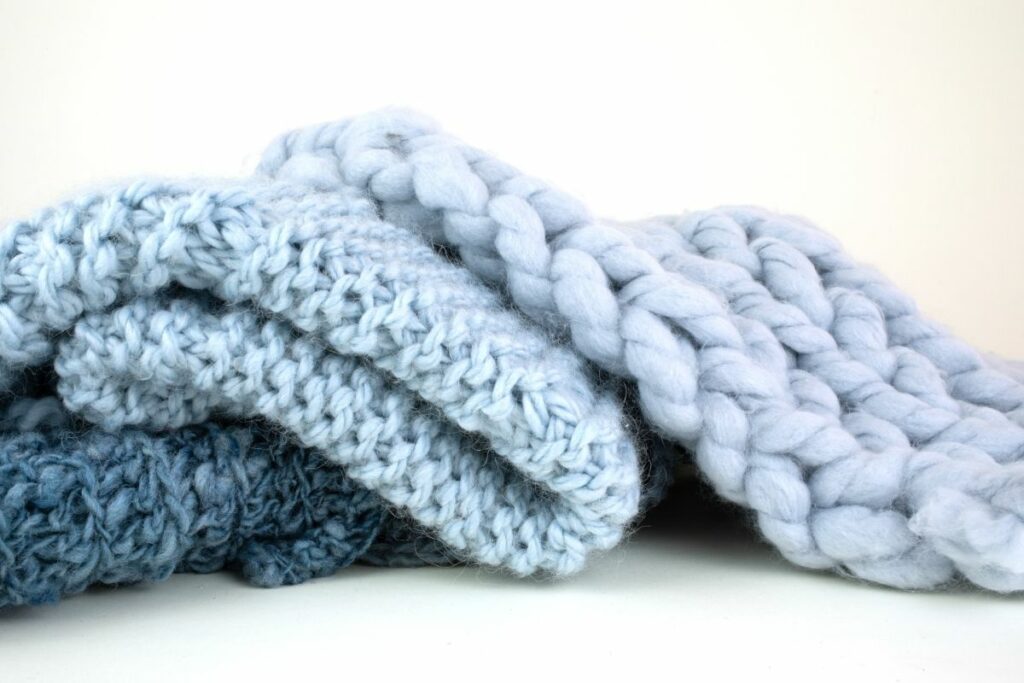
However, they’re also incredibly useful for anyone who deals with sensory issues or even if you’re just prone to fidget.
Fidget blankets are a great way to calm down and relax. They are usually designed to have several different parts that offer multiple ways to fidget, such as the ability to move around the edges of the blanket, roll up into balls, or use your fingers to pick at the fabric.
While making a fidget blanket might seem hard at first, they’re actually super-easy to make, and only need a few simple things you probably already have at home!
In this easy-to-follow guide, we’ll teach you how to make your very own fidget blanket in just a few simple steps! So let’s get started, shall we?
What Is A Fidget Blanket?
Fidget blankets are a type of quilt specially designed for people who are prone to nervousness or agitation. These blankets are generally small to fit in the lap (usually about 18″ x 21″) and feature a variety of fabrics and designs.
They are covered in a variety of adornments, tassels, and fidgets, which are designed to provide activity for the fidgeting hands of people with autism, dementia, ADHD, and other health issues that cause fidgeting.
Fidget blankets can be made out of any number of materials, but they are typically soft and occasionally heavy. The goal is to create something that provides comfort and distraction for fidgeting hands by providing an array of options for the fidgeter to grab, play with, or otherwise manipulate.
Different textures and raised sections also provide stimulation, so mixing materials and adding embroidery is also common in fidget blankets.
How To Make A Fidget Blanket: Step-By-Step Tutorial
Making a fidget blanket is pretty straightforward, but it does require some planning ahead. You’ll need to gather all the necessary supplies before starting, and then follow our step-by-step tutorial below to complete the project.
1. Gather Materials
You will need these basic supplies to make your fidget blanket:
- Fabric – This could be anything from cotton to fleece to old fabric you have lying around. We recommend using fleece, as it’s not too heavy but is great for keeping you warm.
- Needle and Thread – A sewing machine will make it much easier to assemble the quilt and add a nice decorative stitch to the blanket, but finer sewing and embroidery will need you to have a regular needle and thread handy.
- Fabric Scissors
- Double-Sided Tape
- Decorations – These can be anything and everything, including buttons, zips, scrap materials, belt buckles, elastic bands, frills, and much more. There are no wrong answers here, so have fun with it!
2. Cut Fabric
Cutting fabric is one of the most important steps in making a fidget blanket. To make your quilt, you need to start out with multiple identical squares. These will each hold a fidget, before being sewn into a larger blanket with many different ways to keep your hands busy.
Start out by cutting squares of fabric. These are typically 5″x5″ or 6″x6″, depending on how large you want the blanket to be and how many embellishments you have. Cut enough squares to form an even rectangle for the finished quilt; you don’t want the fidget blanket to be too large, so aim for either 20, 24, or 30 squares for a good-sized quilt.
In addition to the squares, cut thin strips of fabric, around an inch thick and the same length as the length or width of the final blanket. These will make the borders between each square.
3. Start Decorating Your Squares
Now that you’ve cut your fabric into squares, you can start to decorate them. This is where you can really let your creativity shine through, so feel free to get creative!
You can use any kind of material you like, whether it be zippers, elastic, buttons, tassels, and many other various scraps and odds and ends that you have laying about.
Have fun trying out different fidgets; it’s really fun figuring out new ways to reuse some old bits and pieces! Just make sure there is plenty of room for stitching later – don’t worry about any excess fabric for now, as you can trim this before you start assembling the quilt.
You should also secure things like tassels, velcro, and other loose or dangling pieces so they don’t accidentally get damaged or lost.
Mixing different combinations of textures, surfaces, materials, and possible fidget methods is a great way to soothe and stimulate people who struggle with sensory disorders, anxiety, dementia, and many other conditions.
4. Assemble The Quilt
With all of your squares decorated and their edges trimmed to make them even, you can start to stitch them together. For this part, you’ll probably want to use a sewing machine for convenience, but a needle and thread will do just fine if you prefer.
You can use a needle and thread also to connect the squares together before sewing them properly to help them stay secured later.
Using double-sided tape, tape the strips of fabric you cut earlier to create borders separating all the squares.
Line the squares up as closely as possible to do this, securing them down with a pin if needed. Apply one side of the tape to the strips, and then secure them down. Trim any excess fabric.
From here, sew along the strips to securely connect all the squares together. Add any frills or border that you want to the outside edge of the fidget blanket, and you’re done!
Final Thoughts
Fidget blankets are a great way for people with autism, ADHD, dementia, and other conditions to occupy their mind and hands. They provide comfort, relief, and stimulation. Making a fidget blanket is a fun project for yourself, and makes a great gift.
Alternatively, you can keep it for yourself and enjoy all the custom-made decorations you added. Either way, now you know how to make your very own fidget blanket!
- How to Cut Quilt Pieces - April 25, 2022
- Your Simple Guide To Quilt Sizes - April 25, 2022
- How To Join A Quilt With Diagonal Seam - April 25, 2022

